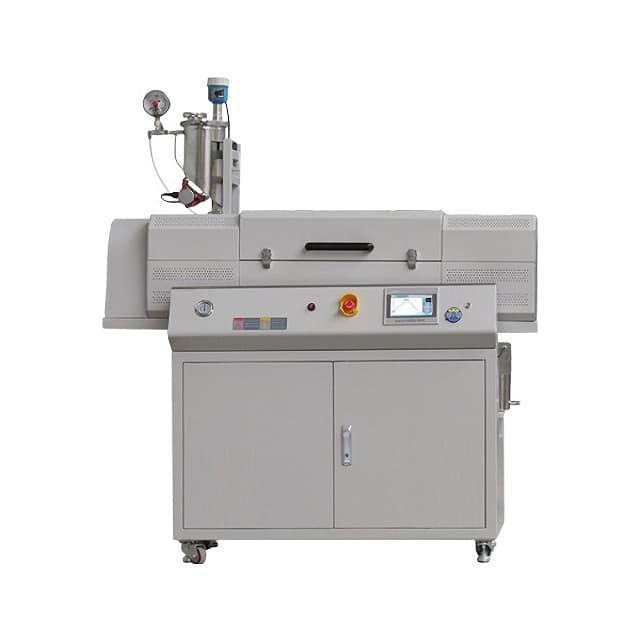
Rotary Furnace
Laboratory Vacuum Tilt Rotary Tube Furnace Rotating Tube Furnace
Item Number : KT-RTF
Price varies based on specs and customizations
- Max. temperature
- 1600 ℃
- Constant work temperature
- 1100-1500℃
- Rotary speed
- 0-20rpm
- Tilting angle
- 5-30 degree
- Furnace tube diameter
- 30 / 40 / 60 / 80 / 100 / 120 / 150 / 230 / 280 mm
- Single heating zone length
- 300 / 450 / 600 / 800 mm
Shipping:
Contact us to get shipping details Enjoy On-time Dispatch Guarantee.
Why Choose Us
Reliable PartnerEasy ordering process, quality products, and dedicated support for your business success.
Applications
Laboratory rotary furnace is an ideal furnace for the laboratory calcination and drying tasks of positive and negative electrode materials of lithium ion batteries (aluminum ferric phosphate, lithium manganate, lithium cobalate, ternary, graphite cathode, etc.) .
Rotary furnace is also can be used for the high temperature reaction, heat treatment, carbonization,sintering, and high temperature pyrolysis for the rare earth materials, chemical catalytic materials, magnetic materials, powder metallurgy materials, nonferrous metal materials and powder or granular materials of kaolin non-metallic mineral materials, etc.
Based on the tube furnace, laboratory rotary furnace has been added the functions of furnace tube rotating and tilting , the rotating speed is stepless speed regulated, tilting angle can be regulated as while;
In order to prevent material hardening and uneven heated in the smooth tube, lifting plates can be added inside the furnace tube, middle big belly type furnace tube can also be designed to improve the heating result.
Due to the excellent sealing technology, rotary tube furnace can work under both the vacuum and controlled atmosphere environment.
Detail & Parts




1.Electriccontact;2.Levelgauge;3.feed tank;4.pressure gauge;5.power button;6.Control cabinet;
The furnace is made of vacuum formed alumina ceramic fiber material;High temperature does not drop powder, small heat capacity;Strong firepower, fast heating speed, uniform temperature field distribution;

1-2.flow meter inlet;3.Gas source;4.Feed tank inlet ball valve;5.Furnace tube inlet ball valve;
Precise temperature control and stable performance;Using digital/microcomputer/PID control technology;Make your experimental results more accurate and reliable, improve work efficiency;
This equipment is professionally used in laboratory calcining and drying of battery positive and negative electrode materials, non-strong acid-base powder materials, and granular materials. Users can choose to fire under vacuum or under atmosphere protection according to the materials to be fired.
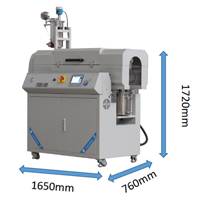
|
|
|
| Stainless steel auger |  |
|
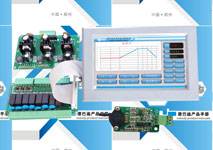
|
|
|
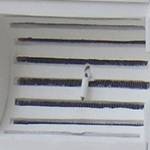
|
Mo doped Fe-Cr-Al alloy | |
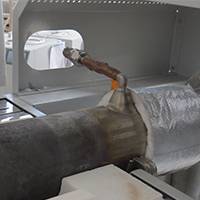
|
Air outlet flaring design to avoid blockage | |
| Precautions for equipment use |
|
Advantages
Superior heating and insulating material, long service life and energy saving
- PID intelligent thermal control,accurate heating and excellent thermal uniformity
- 7 inches TFT touch screen controller, more friendly program setting and historical data analysis
- Scientific rotating system design, stable working and wide range stepless speed regulated
- Electric drive tilting with wide adjustable inclination angle,flexible control material movement
- Unique stable and dynamic vacuum sealing technology, both vacuum and controlled atmosphere working environment are available
- Whole variety of custom design options to build up an exclusive rotary tube furnace for your researching job
Technical specifications
| Furnace model | KT-RTF12 | KT-RTF14 | KT-RTF16 |
| Max. temperature | 1200℃ | 1400℃ | 1600℃ |
| Constant work temperature | 1100℃ | 1300℃ | 1500℃ |
| Heating rate | 0-20℃/min | 0-10℃/min | |
| Furnace tube material | High purity quartz | Al2O3/Si3N4 | |
| Rotary speed | 0-20rpm | ||
| Tilting angle | -5-30 degree | ||
| Furnace tube diameter | 30 / 40 / 60 / 80 / 100 / 120 / 150 / 230 / 280 mm | ||
| Single heating zone length | 300 / 450 / 600 / 800 mm | ||
| Vacuum sealing solution | SS 304 flange with O ring | ||
| Chamber material | Japan alumina fiber | ||
| Heating element | Cr2Al2Mo2 wire coil | SiC | MoSi2 |
| Temperature sensor | K type | S type | B type |
| Temperature controller | Digital PID controller/Touch screen PID controller | ||
| Temperature control accuracy | ±1℃ | ||
| Electric power supply | AC110-220V,50/60HZ | ||
| Different tube material and size and heating zone length can be customized | |||
Warnings
Operator safety is the top important issue! Please operate the equipment with cautions. Working with inflammable& explosive or toxic gases is very dangerous, operators must take all necessary precautions before starting the equipment. Working with positive pressure inside the reactors or chambers is dangerous, operator must fellow the safety procedures strictly. Extra caution must also be taken when operating with air-reactive materials, especially under vacuum. A leak can draw air into the apparatus and cause a violent reaction to occur.
Designed for You
KinTek provide deep custom made service and equipment to worldwide customers, our specialized teamwork and rich experienced engineers are capable to undertake the custom tailoring hardware and software equipment requirements, and help our customer to build up the exclusive and personalized equipment and solution!
Would you please drop your ideas to us, our engineers are ready for you now!
FAQ
What Is A Tube Furnace?
Laboratory tube furnace is one classic external heating high temperature tube furnace, also named hot wall heating furnace.
According to the different working temperature, furnace tube material usually can be transparent quartz tubes, high purity alumina ceramic tubes and high strength metal alloy tubes.
To meet different thermal researching purposes, tube furnace can be designed with multi heating zones, so as to have a flexible control of temperature gradient in the tube working chamber; furnace tube can work with a controlled atmosphere working environment or a high vacuum working environment.
What Is A Vacuum Furnace Used For?
What Is A Rotary Tube Furnace?
What Types Of Materials Can Be Processed In A Rotary Furnace?
How Does A Tube Furnace Work?
Tube furnace heating elements are placed surrounding the cylindrical cavity, furnace can only heat the samples in the cylindrical cavity through indirect thermal radiation, since furnace tube can prevent sample material from contacting with furnace heating elements and insulation materials, so tube furnace creates a clean isolated heat chamber and reduce risks of the sample material contaminating by the furnace.
What Is The Process Of A Vacuum Furnace?
How Does A Rotary Tube Furnace Work?
What Are The Rotary Furnace Types?
What Is The Application For Tube Furnace?
Tubular furnace is mainly used in metallurgy, glass, heat treatment, lithium anode and cathode materials, new energy, abrasives and other industries, and is a professional equipment for measuring materials under certain temperature conditions.
Tube furnace features simple structure, easy operation, easy control and continuous production.
Tube furnace is also widely applied in the CVD (chemical vapor deposition) and plasma enhanced CVD systems.
What Gas Is Used In A Vacuum Furnace?
What Are The Advantages Of A Rotary Tube Furnace?
What Is The Function Of Rotary Tube Furnace?
What Are The Advantages Of Rotor Furnace?
How Many Different Types Tube Furnace?
Tube furnace can work with different mechanical functions smoothly, so there are many different types tube furnace variations for different experiment purposes, typical furnace furnaces are as below:
- Horizontal tube furnace
- Vertical tube furnace
- Split tube furnace
- Rotary tube furnace
- Tilting tube furnace
- Sliding tube furnace
- Fast heating and cooling tube furnace
- Continuous feeding and discharging tube furnace
What Is The Heating Element Used In A Vacuum Furnace?
What Are The Advantages Of Rotary Tube Furnace?
What Is The Efficiency Of A Rotary Furnace?
What Are The Advantages Of Using A Tube Furnace?
Can A Rotary Furnace Be Used For Continuous Production?
What Safety Precautions Should Be Taken When Using A Tube Furnace?
How Can The Performance Of A Rotary Furnace Be Optimized?
4.9
out of
5
This furnace is an absolute game-changer for our laboratory! The temperature control is precise, and the rotary and tilting mechanisms make it easy to handle materials.
4.8
out of
5
I'm thoroughly impressed with the quality and performance of this rotary tube furnace. It's perfect for our research needs and has significantly improved our productivity.
4.7
out of
5
This furnace is a valuable addition to our laboratory equipment. It's versatile, user-friendly, and provides consistent and reliable results.
4.6
out of
5
The vacuum sealing solution and temperature control accuracy of this furnace are top-notch. It's a great choice for precise and repeatable experiments.
4.8
out of
5
The rotary tube furnace has exceeded our expectations. It's easy to set up and operate, and the temperature uniformity is exceptional.
4.7
out of
5
This furnace is a testament to technological advancement. It's a powerful tool that has greatly enhanced our research capabilities.
4.9
out of
5
The furnace's PID intelligent thermal control and accurate heating make it a reliable choice for our laboratory. Highly recommended!
4.8
out of
5
The furnace's versatility and custom design options make it an ideal choice for our diverse research needs. We're very satisfied with its performance.
4.7
out of
5
The vacuum sealing solution and dynamic vacuum sealing technology are impressive. The furnace maintains a stable and controlled atmosphere, ensuring accurate results.
4.6
out of
5
The furnace's 7-inch TFT touch screen controller makes it user-friendly and intuitive. Setting programs and analyzing historical data is a breeze.
4.8
out of
5
The furnace's superior heating and insulating material ensure long service life and energy savings. It's an economical choice that delivers exceptional performance.
4.7
out of
5
The scientific rotating system design ensures stable working and a wide range of stepless speed regulation. It's a versatile tool that meets our various experimental requirements.
4.9
out of
5
The electric drive tilting with a wide adjustable inclination angle provides precise control over material movement. It's an excellent feature for our research applications.
4.8
out of
5
The furnace's ability to work in both vacuum and controlled atmosphere environments makes it a versatile tool for various experiments. We're very pleased with its performance.
4.7
out of
5
The different tube material, size, and heating zone length customization options are a great advantage. We were able to tailor the furnace to our specific research needs.
REQUEST A QUOTE
Our professional team will reply to you within one business day. Please feel free to contact us!
Related Products

Vacuum Sealed Continuous Working Rotary Tube Furnace Rotating Tube Furnace
Experience efficient material processing with our vacuum-sealed rotary tube furnace. Perfect for experiments or industrial production, equipped with optional features for controlled feeding and optimized results. Order now.

Rotary Tube Furnace Split Multi Heating Zone Rotating Tube Furnace
Multi zone rotary furnace for high-precision temperature control with 2-8 independent heating zones. Ideal for lithium ion battery electrode materials and high-temperature reactions. Can work under vacuum and controlled atmosphere.

High Pressure Laboratory Vacuum Tube Furnace Quartz Tubular Furnace
KT-PTF High Pressure Tube Furnace: Compact split tube furnace with strong positive pressure resistance. Working temp up to 1100°C and pressure up to 15Mpa. Also works under controller atmosphere or high vacuum.

Laboratory Quartz Tube Furnace Tubular RTP Heating Furnace
Get lightning-fast heating with our RTP Rapid Heating Tube Furnace. Designed for precise, high-speed heating and cooling with convenient sliding rail and TFT touch screen controller. Order now for ideal thermal processing!

Vacuum Hot Press Furnace Heated Vacuum Press Machine Tube Furnace
Reduce forming pressure & shorten sintering time with Vacuum Tube Hot Press Furnace for high-density, fine-grain materials. Ideal for refractory metals.

Inclined Rotary Plasma Enhanced Chemical Vapor Deposition PECVD Equipment Tube Furnace Machine
Introducing our inclined rotary PECVD furnace for precise thin film deposition. Enjoy automatic matching source, PID programmable temperature control, and high accuracy MFC mass flowmeter control. Built-in safety features for peace of mind.

Vertical Laboratory Quartz Tube Furnace Tubular Furnace
Elevate your experiments with our Vertical Tube Furnace. Versatile design allows for operation under various environments and heat treatment applications. Order now for precise results!

Electric Rotary Kiln Pyrolysis Furnace Plant Machine Calciner Small Rotary Kiln Rotating Furnace
Electric rotary kiln - precisely controlled, it's ideal for calcination and drying of materials like lithium cobalate, rare earths, and non-ferrous metals.

Multi Zone Laboratory Quartz Tube Furnace Tubular Furnace
Experience precise, efficient thermal testing with our Multi Zone Tube Furnace. Independent heating zones and temperature sensors allow for controlled high-temperature gradient heating fields. Order now for advanced thermal analysis!

Inclined Rotary Plasma Enhanced Chemical Vapor Deposition PECVD Equipment Tube Furnace Machine
Upgrade your coating process with PECVD coating equipment. Ideal for LED, power semiconductors, MEMS and more. Deposits high-quality solid films at low temps.

Electric Rotary Kiln Small Rotary Furnace for Activated Carbon Regeneration
Revitalize your activated carbon with KinTek's Electric Regeneration Furnace. Achieve efficient and cost-effective regeneration with our highly automated rotary kiln and intelligent thermal controller.

Graphite Vacuum Furnace IGBT Experimental Graphitization Furnace
IGBT experimental graphitization furnace, a tailored solution for universities and research institutions, with high heating efficiency, user-friendliness, and precise temperature control.

Vacuum Heat Treat and Molybdenum Wire Sintering Furnace for Vacuum Sintering
A vacuum molybdenum wire sintering furnace is a vertical or bedroom structure, which is suitable for withdrawal, brazing, sintering and degassing of metal materials under high vacuum and high temperature conditions. It is also suitable for dehydroxylation treatment of quartz materials.

1700℃ Laboratory Quartz Tube Furnace with Alumina Tube Tubular Furnace
Looking for a high-temperature tube furnace? Check out our 1700℃ Tube Furnace with Alumina Tube. Perfect for research and industrial applications up to 1700C.

Small Vacuum Heat Treat and Tungsten Wire Sintering Furnace
The small vacuum tungsten wire sintering furnace is a compact experimental vacuum furnace specially designed for universities and scientific research institutes. The furnace features a CNC welded shell and vacuum piping to ensure leak-free operation. Quick-connect electrical connections facilitate relocation and debugging, and the standard electrical control cabinet is safe and convenient to operate.

Vacuum Heat Treat and Sintering Furnace with 9MPa Air Pressure
The air pressure sintering furnace is a high-tech equipment commonly used for the sintering of advanced ceramic materials. It combines vacuum sintering and pressure sintering techniques to achieve high-density and high-strength ceramics.

Electric Rotary Kiln Continuous Working Small Rotary Furnace Heating Pyrolysis Plant
Efficiently calcine and dry bulk powder and lump fluid materials with an electric heating rotary furnace. Ideal for processing lithium ion battery materials and more.

Laboratory Muffle Oven Furnace Bottom Lifting Muffle Furnace
Efficiently produce batches with excellent temperature uniformity using our Bottom Lifting Furnace. Features two electric lifting stages and advanced temperature control up to 1600℃.

Graphite Vacuum Furnace Negative Material Graphitization Furnace
Graphitization furnace for battery production has uniform temperature and low energy consumption. Graphitization furnace for negative electrode materials: an efficient graphitization solution for battery production and advanced functions to enhance battery performance.
Related Articles

The Geometry of Heat: Why Motion Matters in Material Synthesis
Static heating creates inconsistencies. Discover how rotary tube furnaces utilize dynamic motion to achieve perfect uniformity in powder and granule processing.

Introducing the Lab Vacuum Tube Furnaces
A vacuum tube furnace is a type of furnace that uses vacuum to isolate the process atmosphere from the external atmosphere.

Materials Science with the Lab Vacuum Furnace
A vacuum furnace is a specialized type of furnace that is designed to operate in a vacuum environment. This means that the furnace is sealed and the air inside is pumped out, creating a low pressure or vacuum inside.

Vacuum Laboratory Furnaces in Advanced Materials Research
In addition to size, there are several other key differences between industrial-scale and laboratory vacuum furnaces

Optimizing Industrial Processes: Rotary Kiln and Laboratory Furnace Solutions
Discover how rotary kilns and laboratory furnaces revolutionize industrial processes. Learn about rotary kiln sizing and design, laboratory furnace features, and industries served. Explore the production of carbon products like biochar and activated carbon.

Exploring Rotary Tube Furnaces: A Comprehensive Guide
Discover the workings of rotary tube furnaces, their diverse applications, and key advantages. Explore how these furnaces operate, their suitability for different processes, and factors to consider when selecting one. Find out why rotary tube furnaces are favored in advanced materials processing.

Electric Rotary Kiln Pyrolysis Furnace: Design, Operation, and Applications
Explore the comprehensive guide on electric rotary kiln pyrolysis furnaces, including their design, operation, efficiency factors, and diverse applications in industries like waste processing and biofuel production.

Rotary Furnaces: Advanced Materials Processing and Applications
Rotary furnaces are versatile and efficient thermal processing systems used in various industries. This comprehensive guide explores the basics of rotary furnaces, their applications, advantages, and key components. Discover how rotary furnaces contribute to advanced materials processing and enhance productivity.

CVD furnace for the growth of carbon nanotubes
Chemical vapor deposition (CVD) furnace technology is a widely used method for growing carbon nanotubes.

Advanced Laboratory Furnaces: Box, Muffle, and Tube Options for High-Temperature Applications
we will explore the various types of lab furnaces and how they function in different high-temperature applications.

Electric Rotary Kiln Pyrolysis Furnace: A Comprehensive Guide to Pyrolysis Technology
Discover the principles, applications, and advantages of electric rotary kiln pyrolysis furnaces. Explore various heating methods, factors affecting efficiency, and the environmental benefits of this technology.

Rotary Furnaces: A Comprehensive Guide to Advanced Materials Processing
Rotary furnaces are widely used for advanced materials processing due to their versatility, temperature uniformity, and energy efficiency. This guide provides an overview of rotary furnace technology, including its working principle, applications, design improvements, and control systems.